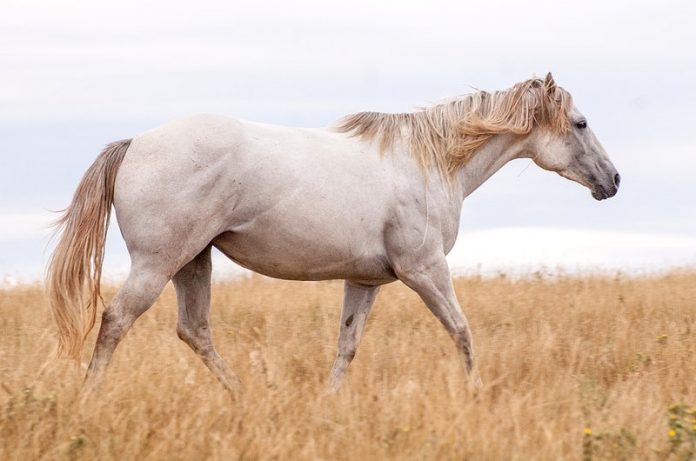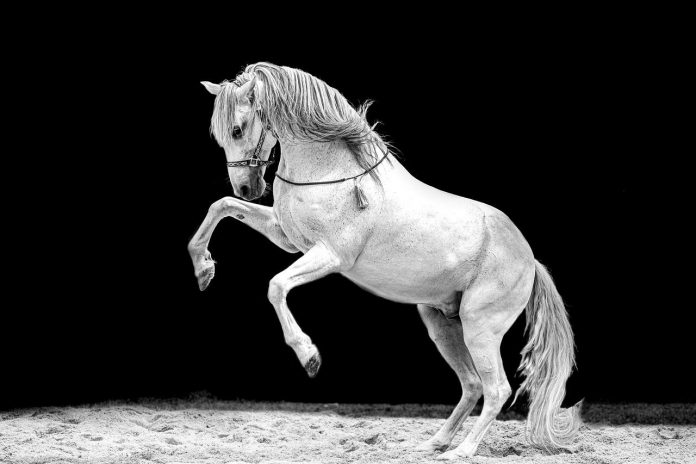How to detect an Illness in the Horse?
Not every horse disease is known and will be covered. Instead, the focus will be on those situations most likely to occur. For purposes of organization, diseases, disorders, and ailments will be covered under the following categories: respiratory diseases, reproductive disorders, viral and bacterial diseases, digestive tract problems, and finally, foot and leg problems.

The expression “healthy as a horse” may be misleading. Few know what signs imply health in horses or how to detect the opposite condition, sick as a horse.” Illness in the horse can be detected only after one understands normal health signs. Most horses will appear similar in many traits, but handlers learn that individuals have slightly different behavior patterns. Any deviation from normal behavior by a horse should be viewed with suspicion.
Just as humans get irritable when suffering from a cold or some other disorder, horses may deviate from their normal behavior pattern for similar reasons. Diagnosis of a problem starts with a suspicion that an ailment of some sort is influencing the behavior pattern of the horse. Conclusions are later based on evidence through closer examination, supplemented by conclusive tests. Such deviations from normal behavior might include a lack of appetite, extreme nervousness, listlessness, excessive sleepiness, lying down for long periods of time, or any variation in the daily routine habits of an individual horse.
Early detection of diseases is very important because the condition can be treated and corrected more easily in the early stages. The infected animal may also be quickly isolated to prevent the spread of the disease to other horses in the herd. Knowledge of some diseases is necessary to arrive at a reasonable diagnosis and a decision on whether to call a veterinarian.
For example, excessive lying down by the horse could be a warning sign. A horse seldom lies down, even to sleep. When it does lie down, it’s usually sunning itself and will lie on its side. A sick horse, on the other hand, will often lie on its belly for long periods of time. If the horse does not offer to get up when approached by a human being, it could be a positive sign of ill health.
Foot disorders are quite easily detected, but not all of them will initially appear as lameness. A horse with a foot problem will naturally want to get the weight off its feet, and although it may not appear lame, it will often hold an aching foot off the ground and paw or nicker its disapproval.
Closer examination of feet, legs, and hooves by noting unnatural odors or by testing the tender spots with a hoof tester may uncover possible inflammation or infection in the early stages. One of the classic signs to be alert for is profuse sweating, pawing the ground, groaning, and an unnatural desire to roll on the ground.
This is a classic symptom of digestive disorders such as colic. It might be thought of as a “tummy ache” in humans. While the condition may only be a discomfort to humans, it could easily spell death to a horse because of the twisting of the intestines, and immediate attention must be given.
The stance of a horse reveals a great deal about its inner balance. A healthy horse will appear loose, with ears erect. If a clapping of the hands does not bring immediate attention with ears projected forward, it could be a sign of poor health. A horse that hangs its head down, arches its back, or droops its ears is quite likely suffering from some disorder.
Veterinarians observe the stance to detect early signs of particular problems, depending on the reaction of the horse to certain movements. For example, a “sawhorse” stance is typical in horses suffering from tetanus. The legs will be spread abnormally wide, and the horse will have difficulty moving sideways.
Sleeping sickness, on the other hand, produces a stance in which weight is shifted to the hindquarters and the horse exhibits a wobbly gait. A horse “going off feed” could signal moldy feed, a change of feed, or a disease. Once the feed is determined to be of good quality and a picky appetite is ruled out, the handler may suspect digestive disorders or disease.
Rapid weight loss is a sure sign of problems and could include minor situations such as a sore mouth, tongue, or injured teeth; or, it could be the more serious condition of infestation with internal parasites or even deadly digestive disturbances. Horses, like humans, may develop allergies, which show up as small bumps that look like mosquito welts on the skin.
This could be a reaction to weeds, pollen, feed, etc. A dull hair coat is also an indication of internal disorders such as parasites, mineral deficiencies, or disease. Excessive scratching could be a sign of infestation with internal or external parasites. The breath of a horse, like that of a human, should not be offensive.
Unpleasant odors from the mouth or body parts, excessive salivation, or dry mouth are signs of many disorders. One of the reasons medical doctors always look in the eye of humans is because the eye shows some of the first signs of disorders brought about by the disease. The same is true in the case of horses.
If eyes lose their moist appearance or the pupil fails to become smaller when a light is shined into it, it may be an indication of disease or disorder. Both eyes should also be checked to rule out the possibility that only one eye has been injured. Another good habit to develop is the observation of the droppings of an animal.
When a horse is ill, the digestive system is upset, and droppings are often not in the normal round balls that break open upon hitting the ground. Observation of droppings for bad odors, severe changes in consistency, mucous, or parasitic content should give further clues to problems. Because of the very common problems of feet and leg disorders, the horse’s underpinning should be observed frequently for swelling or obvious circumference of one limb as compared to the other.
The horse’s vital signs temperature, respiration, and pulse—are good indicators of health or impending problems. The normal body temperature of the horse should be between 100° and 101°F. Any variation from this norm should be viewed as conclusive evidence that a problem exists. A horse suspected of illness should have its temperature checked by placing a thermometer in the rectum.

Be sure the thermometer is lubricated with Vaseline or a similar substance, and it is recommended that a longer thermometer designed especially for horses be used in order to reach far enough into the rectum to get an accurate reading. Because of rectal muscle movement, the thermometer should be secured by a string and clamped to the tail to prevent losing it. A two- or three-minute reading will be sufficient to accurately check the temperature.
The number of breaths taken per minute at rest should average 16, but will vary with breeds and individuals. Horses should be checked when known to be normal to establish a standard. Watch the in-and-out motion of the nostrils or rib cage for an accurately timed minute to get a normal respiration rate. The normal pulse should be slightly more than twice the respiration rate on average. The pulse, or heartbeat, is determined by the throb of an artery, most conveniently felt on the inner side of the horse’s jaw.







